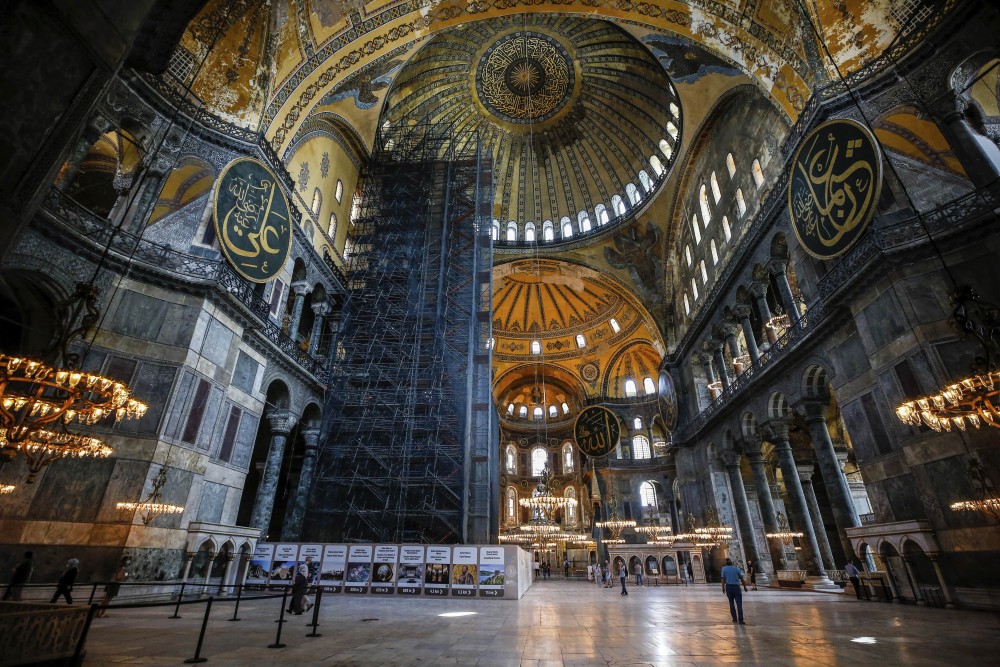Museum or mosque? Turkey debates historic structure’s status

In its more than 1,400-year existence, the majestic domed structure of Hagia Sophia in Istanbul has served as the Byzantine Empire’s main cathedral, as a mosque under the Ottoman Empire, and as a museum in modern Turkey, attracting millions of tourists each year.
The sixth-century building is now at the center of a heated debate between nationalist, conservative, and religious groups who are pressing for it to be converted back into a mosque and those who believe the UNESCO World Heritage site should remain a museum, underscoring Istanbul’s status as a bridge between continents and cultures.
On July 2, the Council of State, Turkey’s highest administrative court, began reviewing a request by a group devoted to reverting Hagia Sophia to a mosque. The group is pressing to annul the 1934 decision that turned the historic structure into a museum.





